Ricoh Caplio GX100 Review
Ricoh Caplio GX100
Can the GX100 offer semi-pro quality with compact camera convenience?
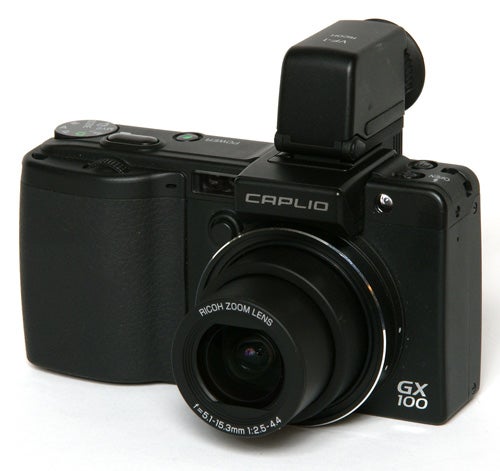
Verdict
Key Specifications
- Review Price: £312.00
Despite its meagre share of the digital camera market, Ricoh has always been one of the great innovators in the industry. When every other major camera manufacturer is content to push out carbon-copy ranges of almost identical cameras, Ricoh is not afraid to try something different. Its range of cameras may be small compared to the likes of Canon, Sony or Fujifilm, but with superb models like the Caplio R7, GR Digital, GR Digital II and GX8 it offers more versatility and quality than most other manufacturers do with five times the number of models.
Today’s camera is another unique concept. The GX100 is officially the replacement for the GX8, but it is not only totally different from that camera, it is also totally unlike anything else on the market. With the GX100, Ricoh has set out to combine the quality, performance and versatility of a high-end semi-pro camera with the convenience and portability of a pocket compact. The result is a camera with a unique 24-75mm-equivalent zoom lens, a 10.1-megapixel 1/1.75-inch sensor with CCD-shift image stabilisation, manual exposure options, RAW capture mode, external flash hot-shoe, 2.5-inch 230k monitor, all-metal body and a unique add-on electronic viewfinder with tilting eyepiece, which clips on to the hot-shoe. That’s three uses of the word “unique” in one paragraph, which is a lot for one camera.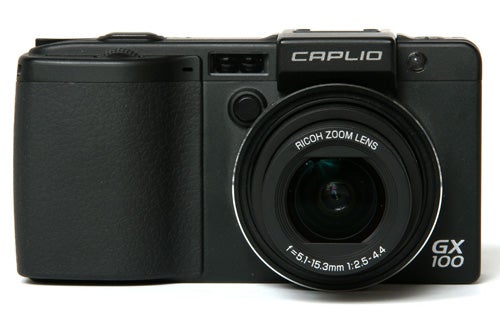
Being so unique, it’s hard to compare the GX100 to anything else. True semi-pro compact cameras are a rarity anyway, and the only real comparison is Canon’s PowerShot G9. It shares at least some of the features, including manual exposure, RAW capture, flash hot-shoe and larger sensor. They are also comparable on price. The G9 is currently selling for around £312, almost to the penny the same price as the GX100. That’s where the similarities end however, because where the Canon is a large camera that you hang around your neck, the GX100 really is small and light enough to carry in a pocket. It measures 112 x 58 x 25mm and weighs approximately 250g with the Li-ion rechargeable battery.
The overall style of the GX100 is very functional, with the same uncompromising box-like rectangular body shape as the GR Digital. Naturally for such a versatile camera, there are a lot of controls dotted about its body, but thanks to a sensible layout and the camera’s relatively long, thin body it manages to avoid being cluttered and there is plenty of room on the back for a large thumb grip, with a rubberised texture also covering the large front handgrip. As well as the usual D-pad and mode dial, the GX100 also has an SLR-style data wheel just in front of the shutter button, and a sprung rocker lever on the back, which provide a very quick and simple way of entering exposure adjustments in manual mode. The rocker lever has a dual function, because when pressed in it activates a quick function menu with up to four options that can be pre-set via the menu. By default it has three options; exposure compensation, white balance and and ISO setting. Also user-defined is the Fn button on the top plate, which by default toggles manual and automatic focusing. Despite the complexity of the camera’s options and features, the control interface is superbly simple and quick to use. Everything you need to adjust often is right where you expect it to be, and the user-programmable controls mean that you can set up the camera to work the way you want it to.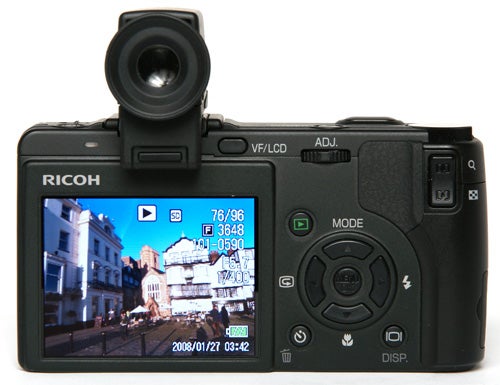
The range of control is impressive to say the least. The exposure options on the mode dial are full automatic, program auto, aperture priority or full manual, as well as movie mode, scene mode and two user-defined settings for often-used custom modes. Manual shutter speeds from three minutes to 1/2000th of a second in 1/3EV increments can be selected, and the range of apertures from a maximum of f/2.5-f/4.4 to a minimum of f/9.1-f/15.8 can also be set in 1/3EV steps. Manual ISO settings of 80 to 1600 are available, and in auto mode an upper limit can be set by the user. In the menu there are a range of pre-set colour options, and another two user-programmable custom settings, with adjustable contrast, saturation and sharpness. Naturally the GX100 has multi-zone, centre-weighted and spot metering, and multi-zone, spot and manual focusing, as well as snap focus mode that sets the focus point to about 2.5 feet. Even the picture size modes are more versatile than usual, with the inclusion of a 7-megapixel 1:1 square-format mode.
There are a couple of options that are notable by their absence however, such as a movable AF or spot metering point, or flash output compensation. It’s also rather strange, considering that the GX100 has a flash hot-shoe, that there is no flash white balance mode. However I found that the daylight setting worked well enough, and any fine adjustments could be made in to the RAW file afterwards. The overall impression however is of a camera designed by photographers, for photographers. For anyone who like to experiment and take unusual photos it is a very satisfying camera to use, and its small size and weight means that it can be used in situations that might be inaccessible to a larger camera. Another useful feature that is unique to Ricoh’s high-spec compacts including the GX100is the ability to use either the supplied 1150mAh li-ion rechargeable batteries, or a pair of AAA batteries. This could be very handy if you forget your battery charger on holiday.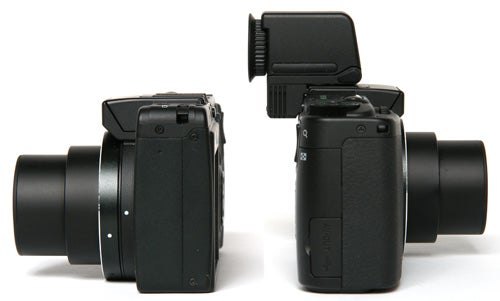
One area where Ricoh still need to do a lot of work is the supplied software. The Ricoh RAW converter is slow, clunky and offers only a limited range of adjustments. Fortunately however the GX100 uses the Adobe Digital Negative (DNG) RAW format, so anyone with recent versions of Adobe Photoshop, which will include pretty much everyone who is likely to buy this camera, can process their pictures using Adobe Camera RAW, which is far better. Using RAW mode brings out the true versatility of the GX100, offering a far greater range of image control and adjustment than the camera’s on-board controls.
As well as a high degree of control, the other thing serious photographers want is good performance, and here too the GX100 delivers. It starts up in under two seconds, and thanks to an exceptionally quick AF system in single-shot mode it can maintain a rate of a shot a second, even with focusing between shots. In continuous mode it shoots the first couple of frames at about three shots a second, but for longer sequences it averages at just under two frames a second, which is still pretty impressive. Low-light focusing is somewhat slower, with a tendency to hunt around, but the built-in AF assist lamp means that it will focus in the dark up at a range of a few metres. Like most Ricoh cameras, the GX100 doesn’t go about its business quietly. The zoom and AF motors are very noisy, with and operate with a loud mechanical whirring sound. This can be a bit disconcerting for anyone used to the whisper-quiet operation of most modern digital cameras, but you soon get used to it. 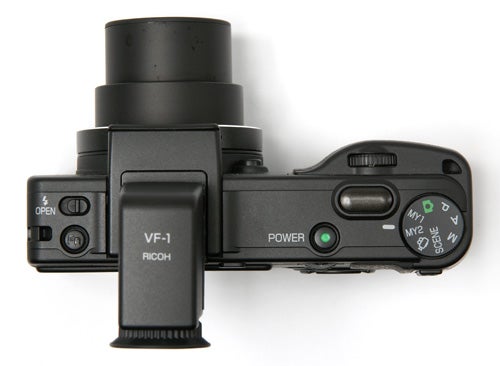
The final criterion is of course image quality, and here is where the GX100 runs into a problem. For all its versatility and performance, it still has a small, overpowered sensor, and is heir to all the woes that brings. The 24-72mm lens is very sharp right across the frame, and produces surprisingly little distortion for such a wide-angle lens. Images are very detailed, but there is a noticeable lack of colour depth and dynamic range. The exposure system seems to be set for shadow detail by default, and as a result it burns out highlights in high-contrast shots. Image noise is also a big problem at all but the lowest ISO settings, with pictures above 400 ISO effectively unusable fro anything but the smallest prints. Despite this, when working within the camera’s limitations it is capable of producing stunning results, and landscape photographers especially will love the highly detailed panoramic shots that are possible thanks to the excellent wide-angle lens. The 72mm telephoto isn’t that useful, since it’s barely long enough for a decent portrait shot, but the GZ100 does have a bayonet fitting mount hidden under its lens bezel, so hopefully a teleconverter will become available at some point. The add-on lenses for the GR Digital do not fit the GX100.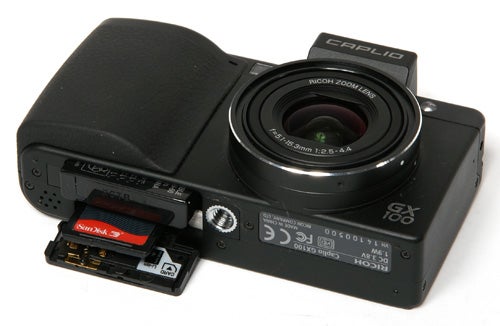
”’Verdict”’
The Ricoh GX100 is an exceptional camera in many ways. It offers a level of control and versatility that keen photographers will love, and a unique range of features and options. Overall performance is excellent, and while image quality isn’t perfect, it’s good enough for most serious hobby photography, and the RAW mode allows for a wide range of picture adjustment. The only real downside to the GX100 is its high price. With entry-level DSLRs starting at around £350, it’s hard to justify spending nearly that much on a compact.
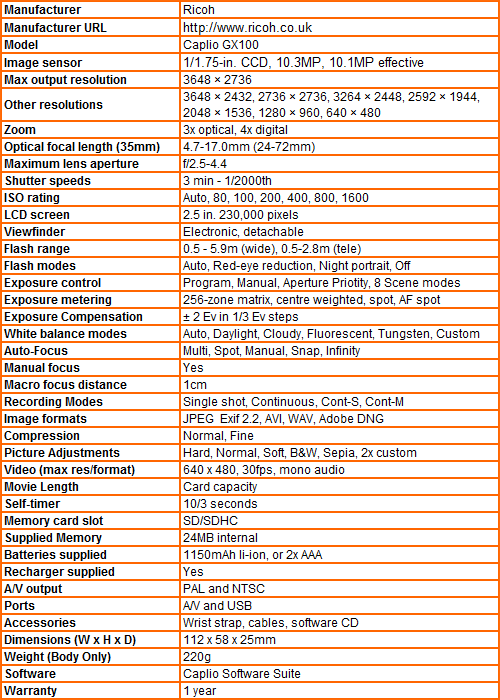
”A range of test shots are shown over the next few pages. Here, the full size images at the minimum and maximum ISO settings have been reduced for bandwidth purposes to let you see the full image, and a series of crops taken from original full resolution images at a range of ISO settings have been included in order for you to gain an appreciation of the overall quality.”
—-
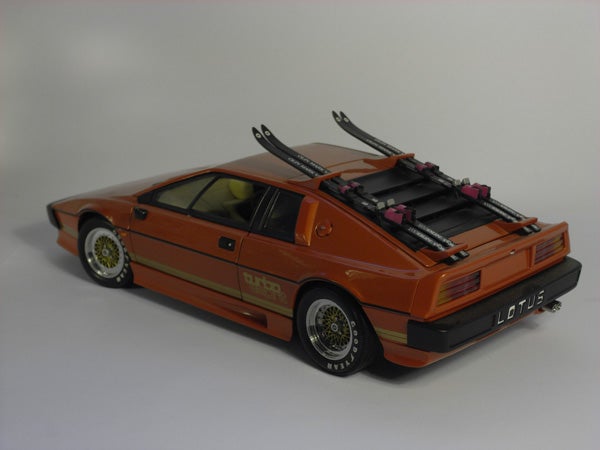
80 ISO, full frame.
—-
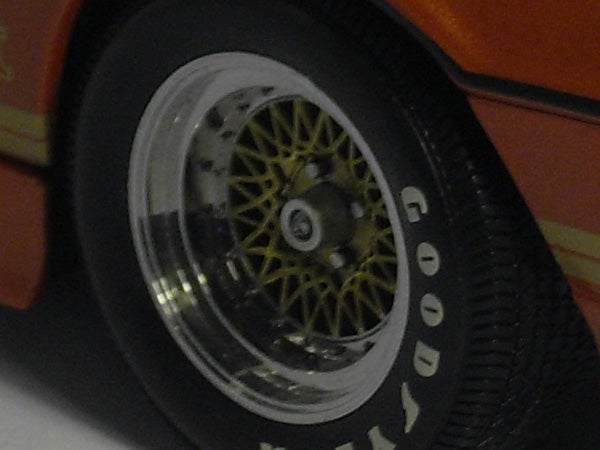
The image quality at 80 ISO is very good, although the focusing is a little off in this shot.
—-
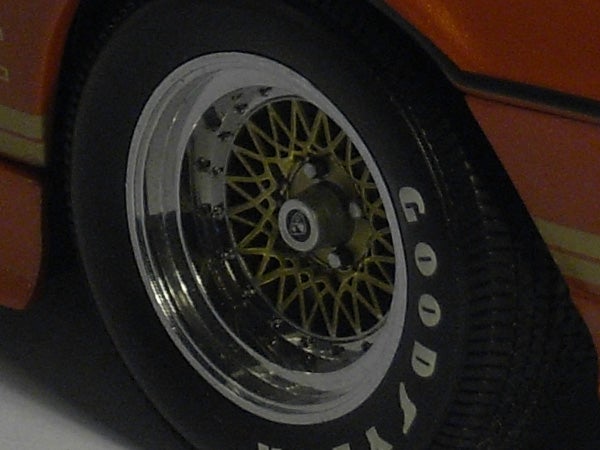
Image quality is still excellent at 100 ISO, and it’s correctly focused this time.
—-
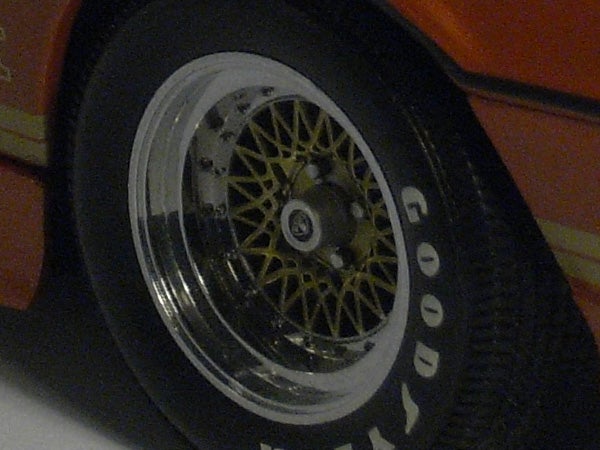
There is some noise appearing at 200 ISO.
—-
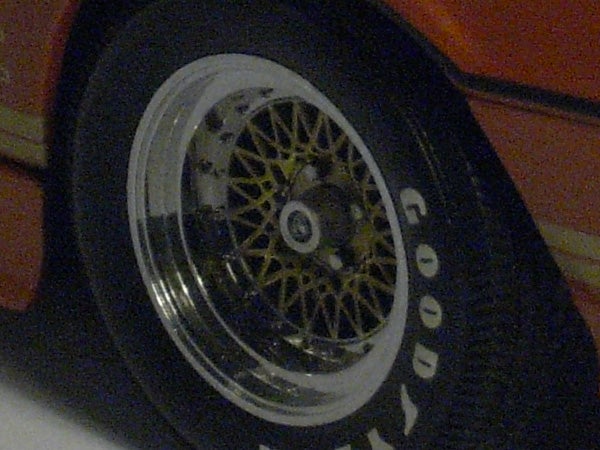
At 400 ISO the noise is getting worse, and this would make a good large print.
—-
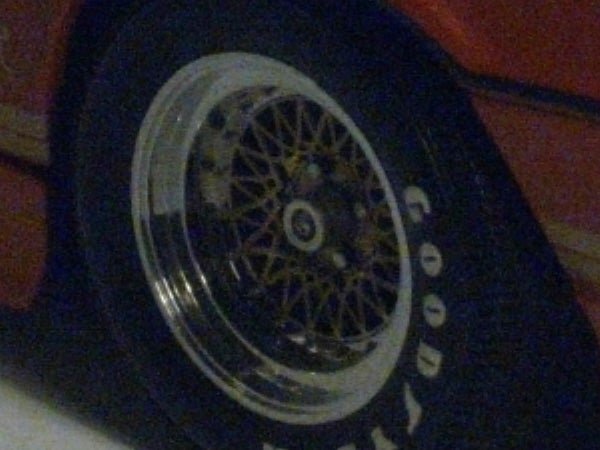
At 800 ISO the noise is now causing a lot of image degradation, with poor colour reproduction and little shadow detail.
—-
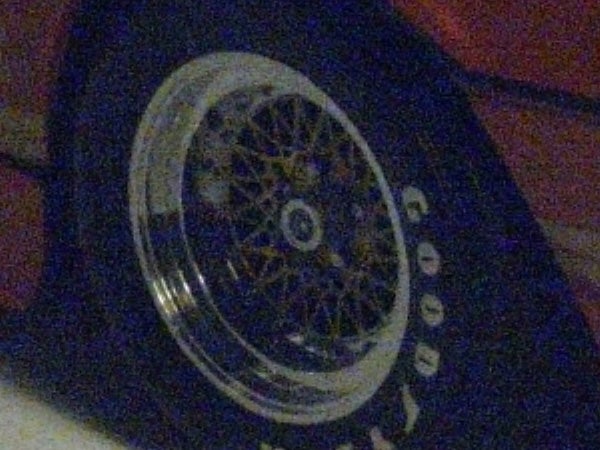
At 1600 ISO the image quality is pretty horrible.
—-
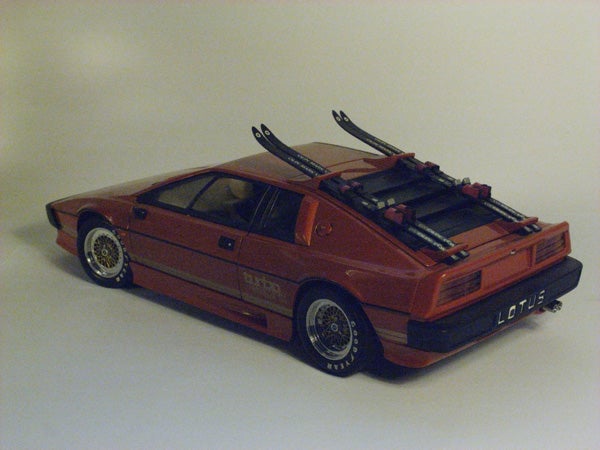
This is the full frame at 1600 ISO.
—-
”A range of general test shots are shown over the next two pages. In some cases, the full size image has been reduced for bandwidth purposes, and a crop taken from the original full resolution image has been placed below it to show the overall image quality. Some other pictures may be clicked to view the original full-size image.”
—-

Here’s the usual detail test shot of the West Window of Exeter Cathedral, for you to compare with other cameras. See below for a full res crop, or click to see the whole picture. Please note that the full-size file is over 7.5MB, since it is converted from the RAW file at minimum compression.
—-
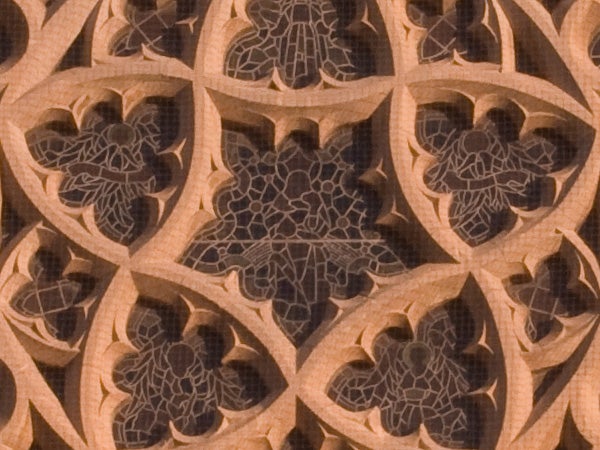
This image is a 100-percent crop of a converted RAW file. The overall level of detail and sharpness is very good by any standard.
—-
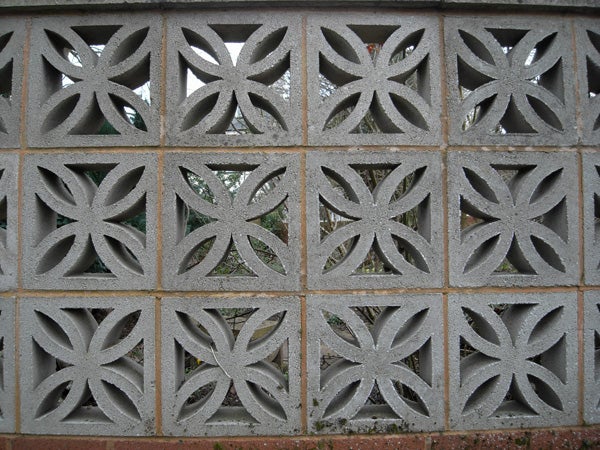
The lens produces some barrel distortion at wide angle, but not much considering its 24mm-equivalent focal length.
—-

Sharpness at the centre of the frame is excellent.
—-
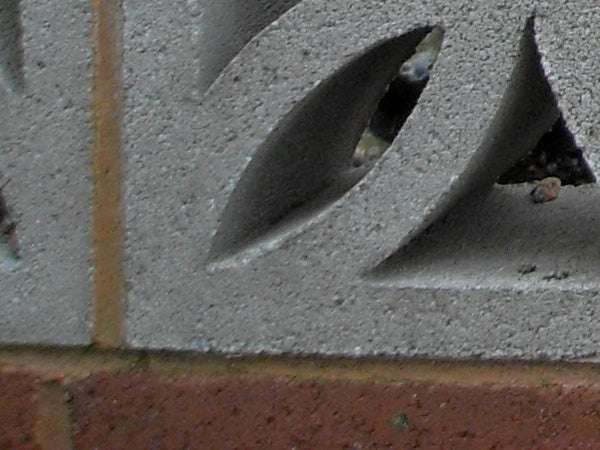
Corner sharpness is exceptionally good.
—-
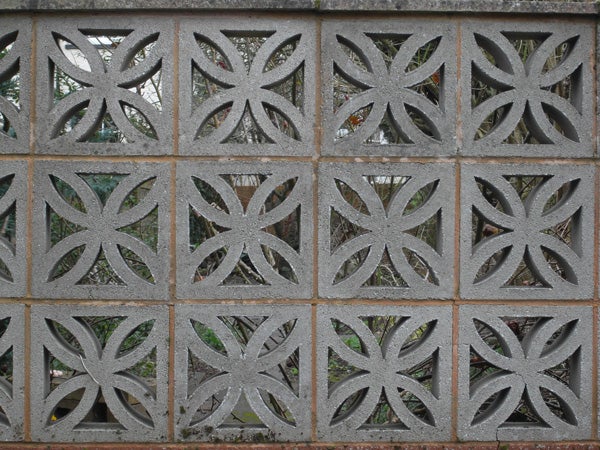
Shot from further back on the telephoto setting, this shows no noticeable pincushion distortion.
—-
”Here are some general test shots to help evaluate the camera’s overall image quality, including the zoom range of the lens. Some pictures may be clicked to download the full size original image.”
—-
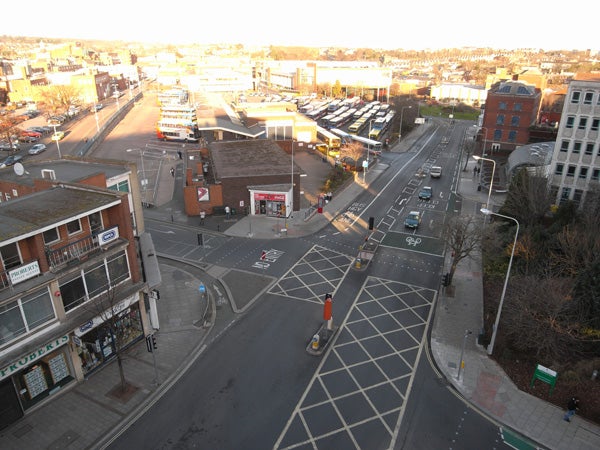
The extra-wide-angle 24mm lens is great for panoramic shots, but the exposure system has made a mess of the highlights.
—-
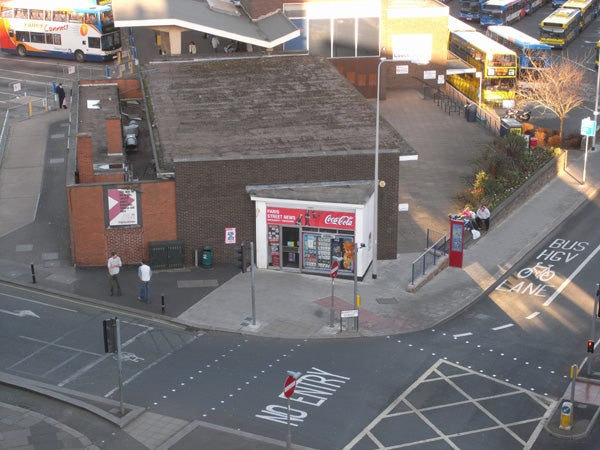
At just 72mm, the telephoto end is barely long enough for portrait shots.
—-

Colour reproduction is very accurate, and the extremely close 1cm macro range is useful too.
—-

The metering system isn’t good at point-and-shoot situations, and here has captured shadows at the expense of burned-out highlights. However the camera has the exposure versatility to overcome this.
—-
Trusted Score
Score in detail
-
Value 4
-
Image Quality 9
Features
| Camera type | Digital Compact |
| Megapixels (Megapixel) | 10.1 Megapixel |
| Optical Zoom (Times) | 3x |

